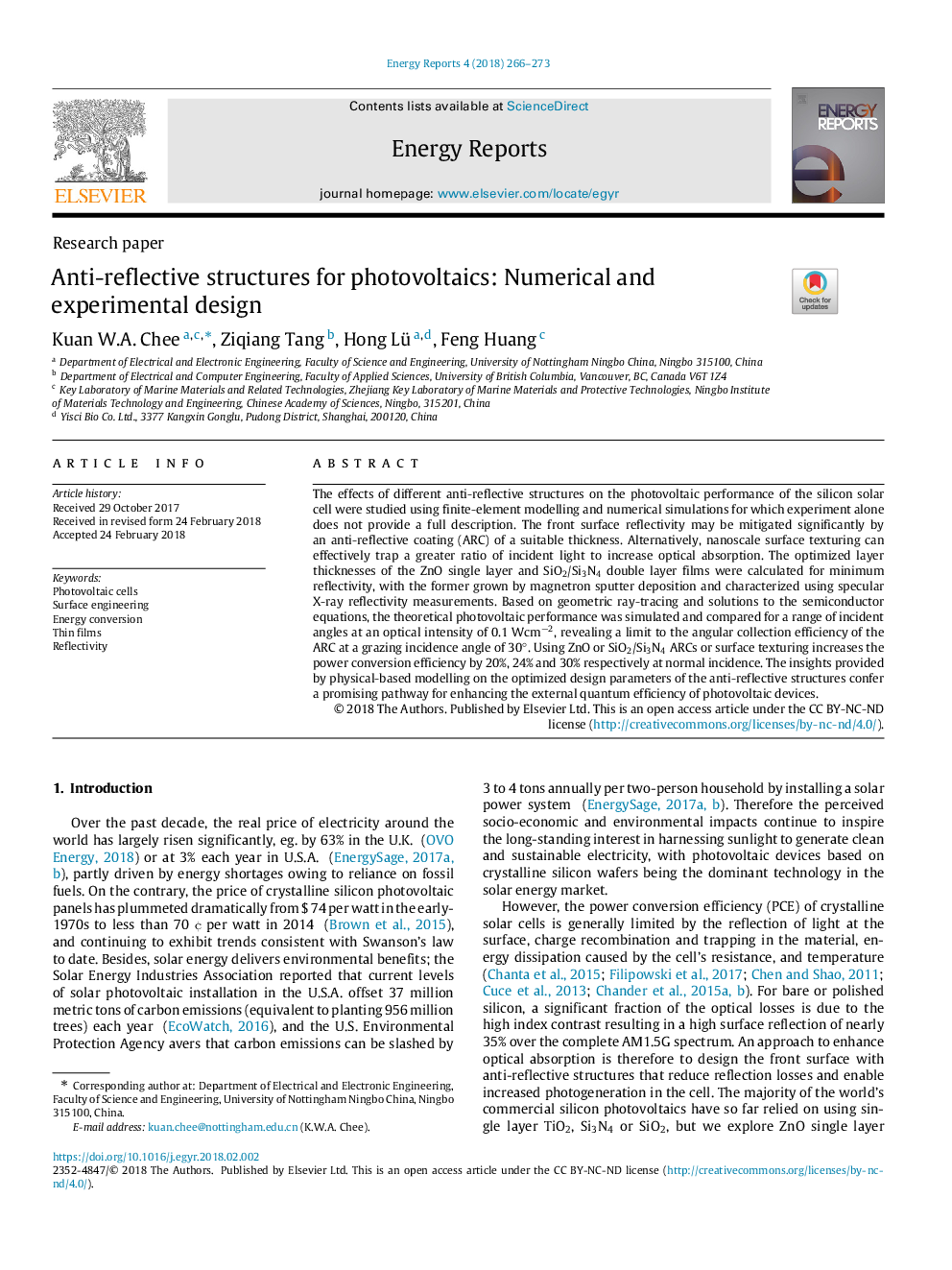| Article ID | Journal | Published Year | Pages | File Type |
|---|---|---|---|---|
| 8079563 | Energy Reports | 2018 | 8 Pages |
Abstract
The effects of different anti-reflective structures on the photovoltaic performance of the silicon solar cell were studied using finite-element modelling and numerical simulations for which experiment alone does not provide a full description. The front surface reflectivity may be mitigated significantly by an anti-reflective coating (ARC) of a suitable thickness. Alternatively, nanoscale surface texturing can effectively trap a greater ratio of incident light to increase optical absorption. The optimized layer thicknesses of the ZnO single layer and SiO2/Si3N4 double layer films were calculated for minimum reflectivity, with the former grown by magnetron sputter deposition and characterized using specular X-ray reflectivity measurements. Based on geometric ray-tracing and solutions to the semiconductor equations, the theoretical photovoltaic performance was simulated and compared for a range of incident angles at an optical intensity of 0.1 Wcmâ2, revealing a limit to the angular collection efficiency of the ARC at a grazing incidence angle of 30°. Using ZnO or SiO2/Si3N4 ARCs or surface texturing increases the power conversion efficiency by 20%, 24% and 30% respectively at normal incidence. The insights provided by physical-based modelling on the optimized design parameters of the anti-reflective structures confer a promising pathway for enhancing the external quantum efficiency of photovoltaic devices.
Related Topics
Physical Sciences and Engineering
Energy
Energy Engineering and Power Technology
Authors
Kuan W.A. Chee, Ziqiang Tang, Hong Lü, Feng Huang,
